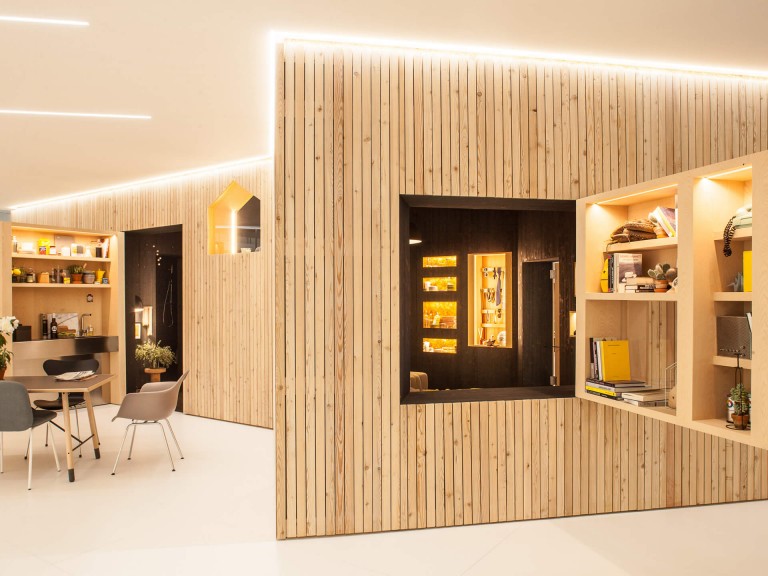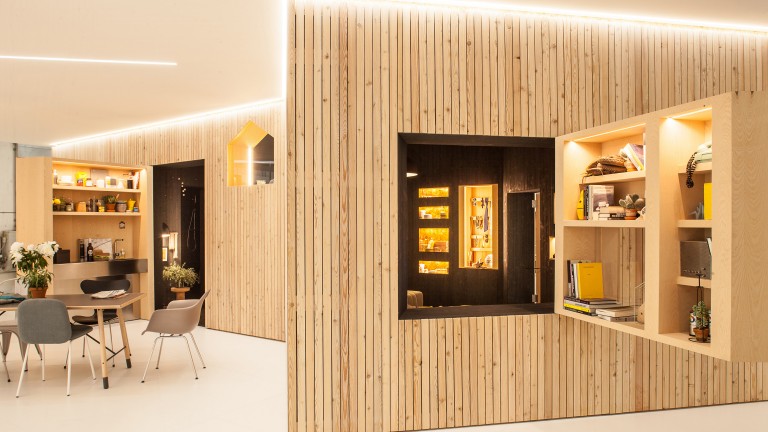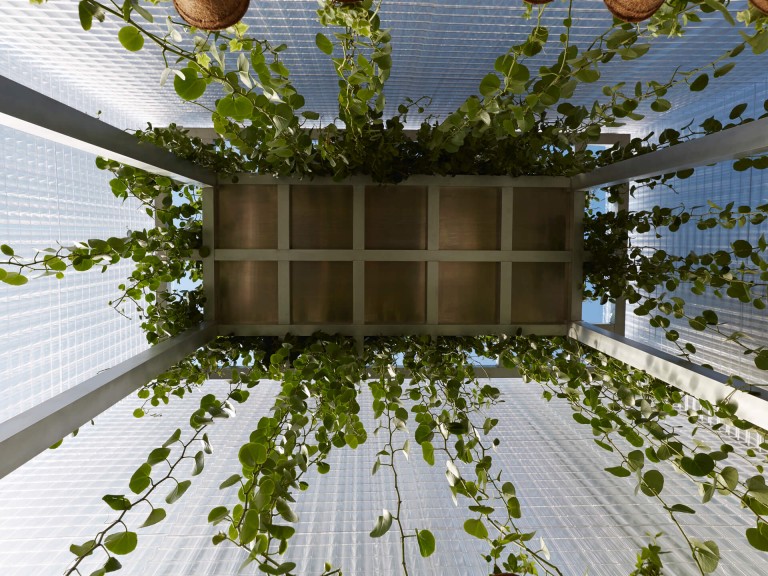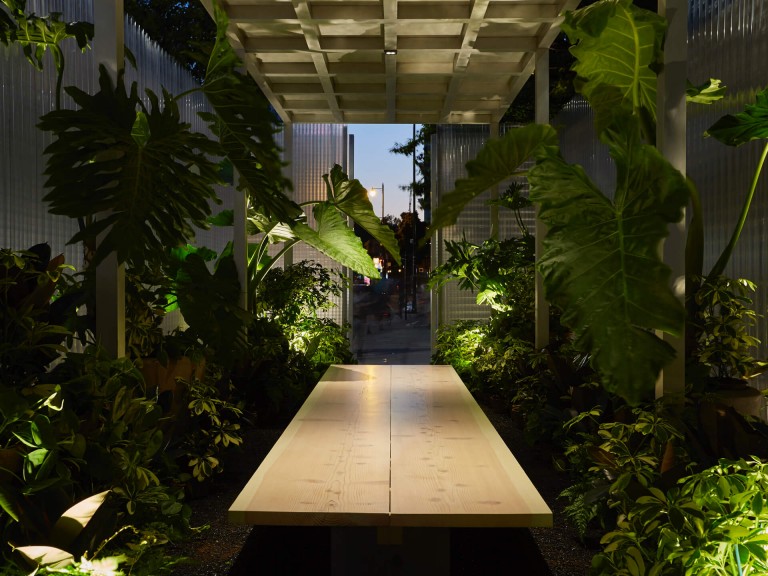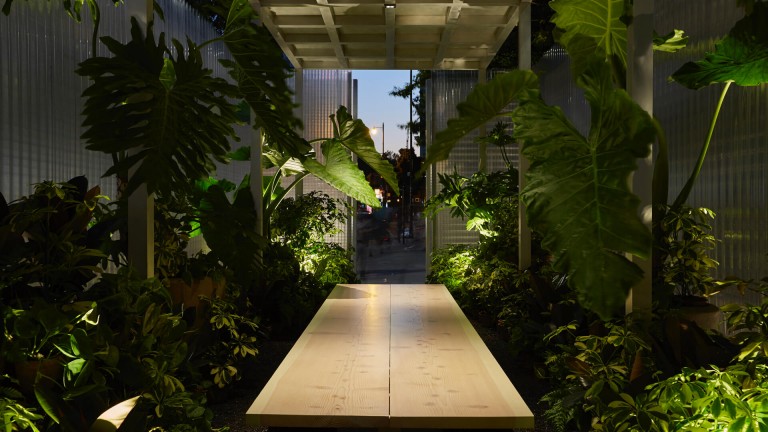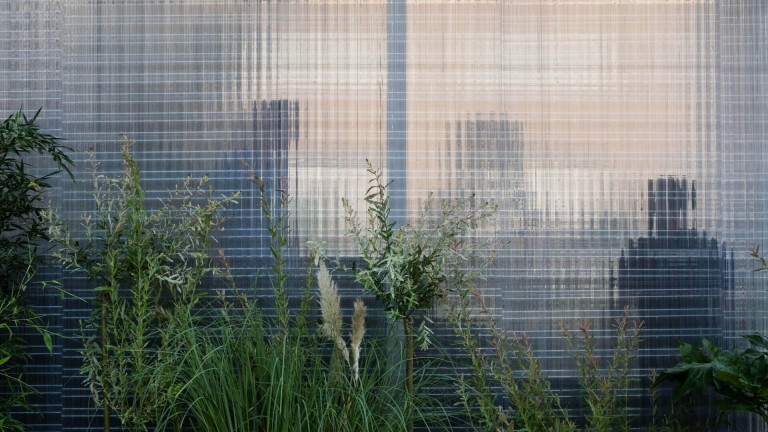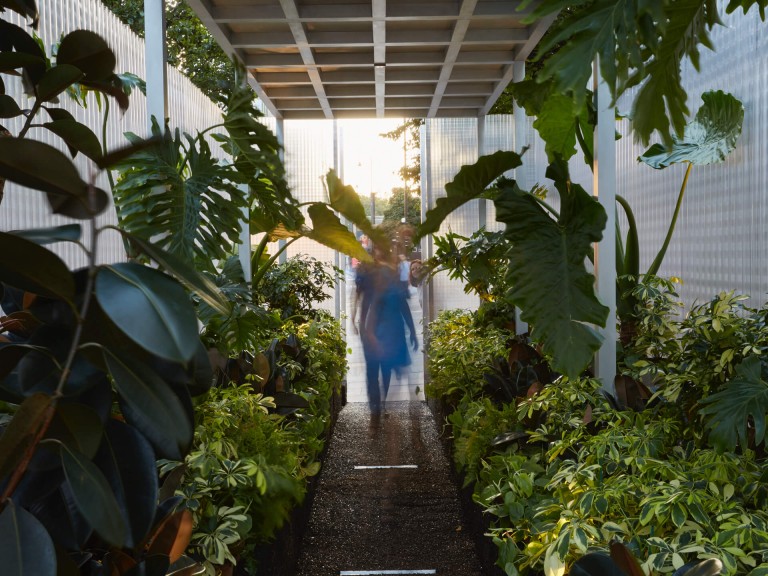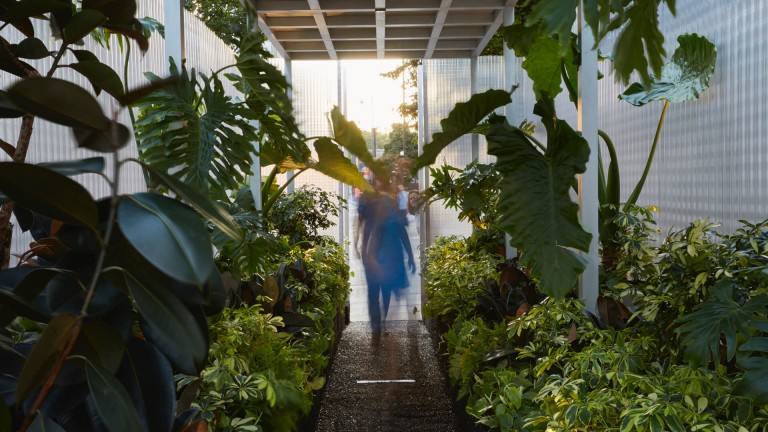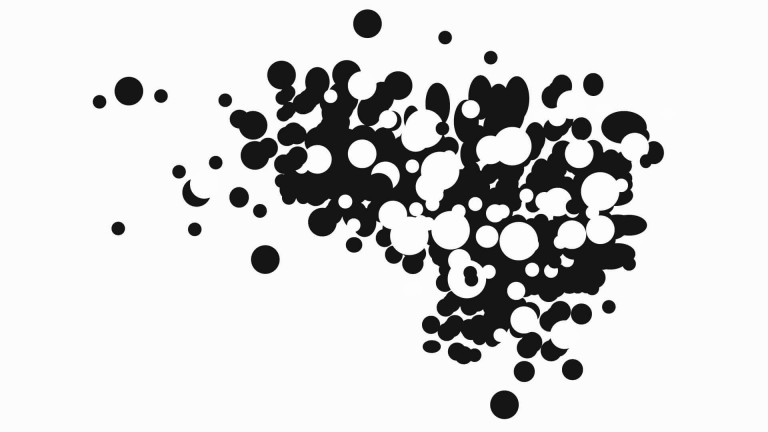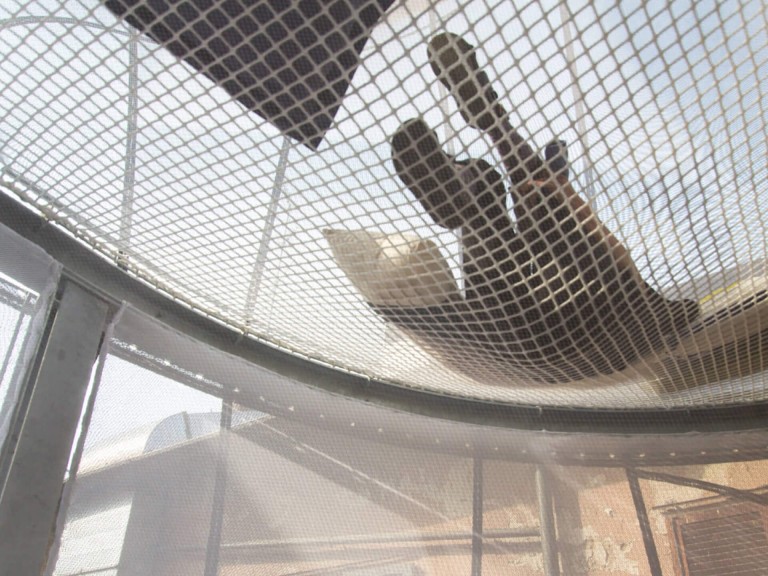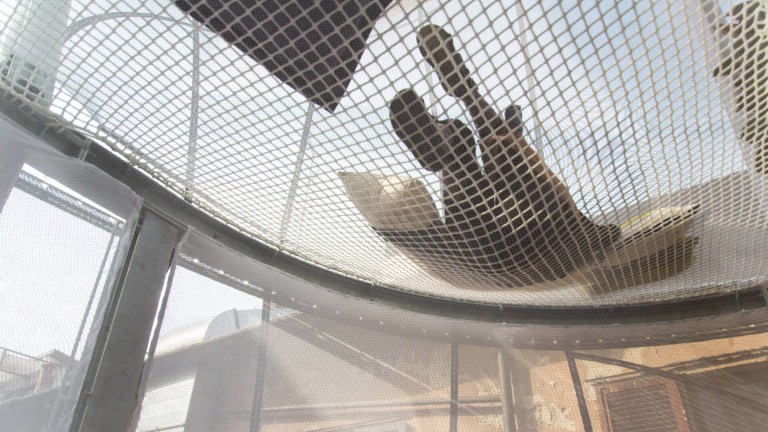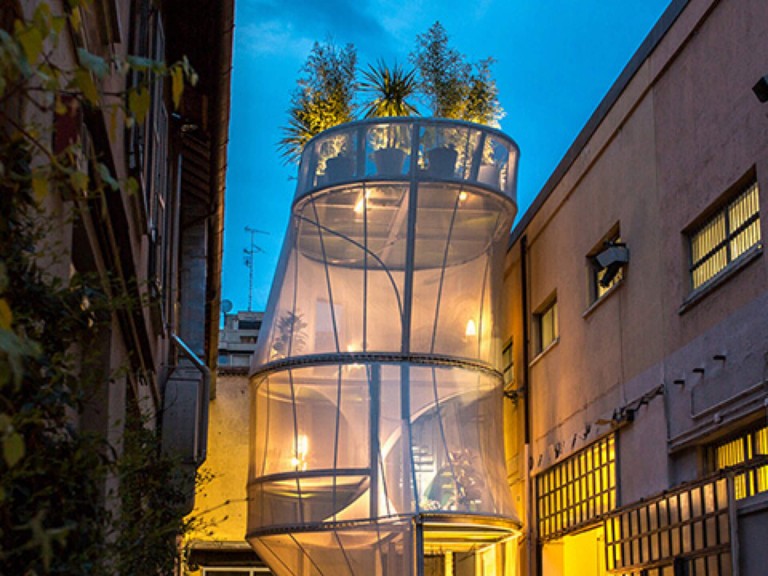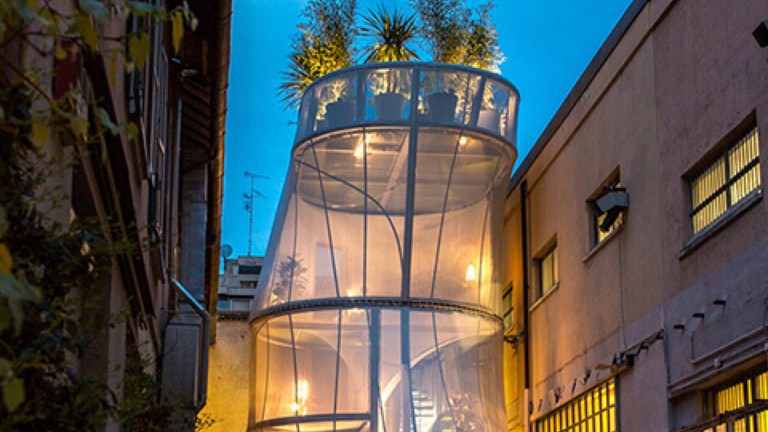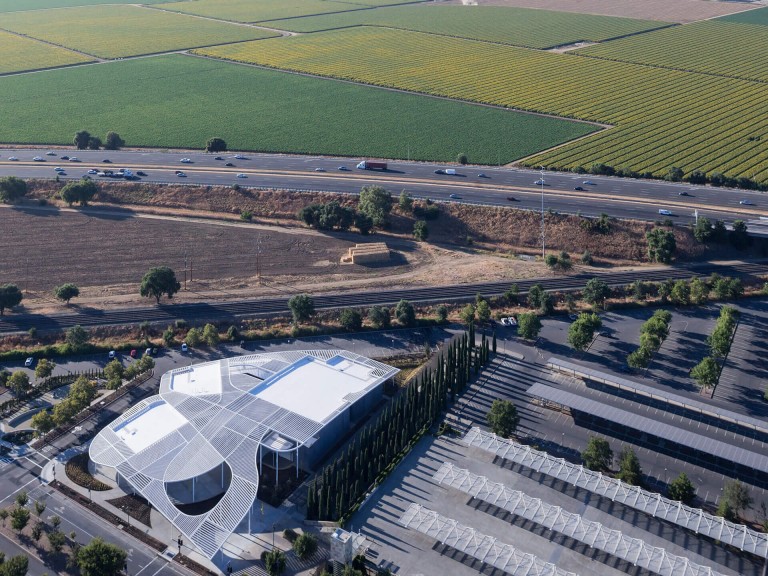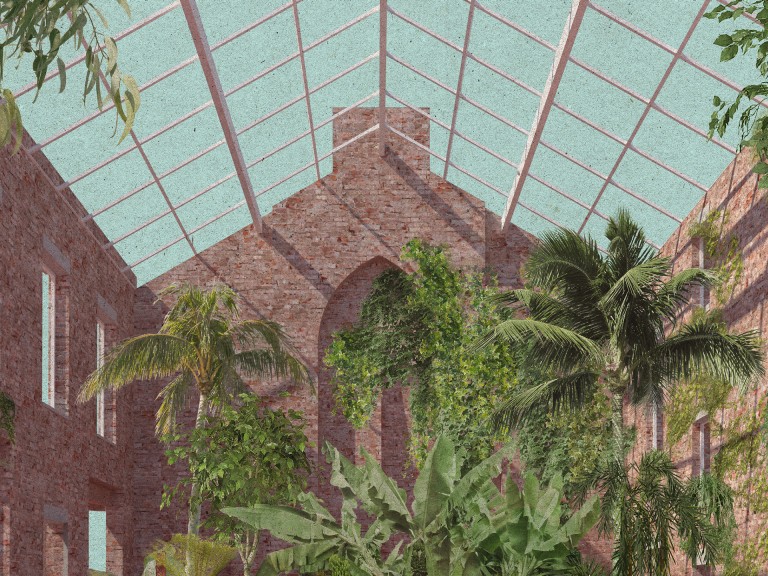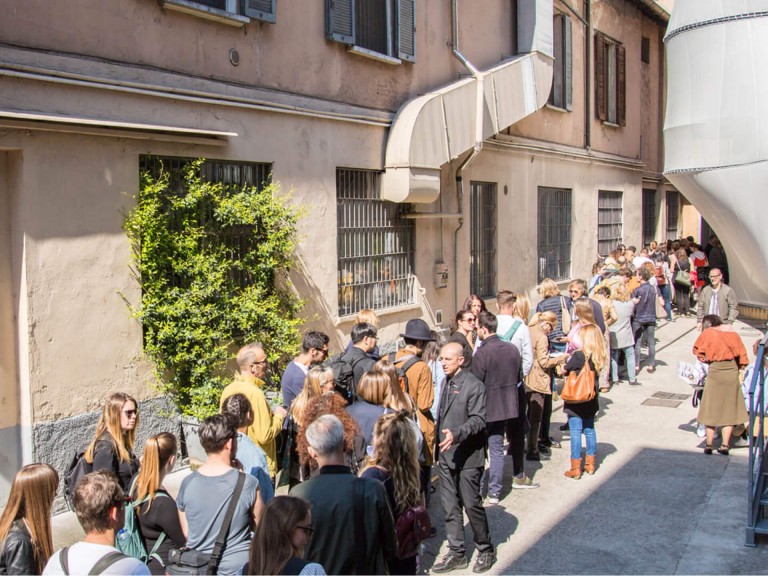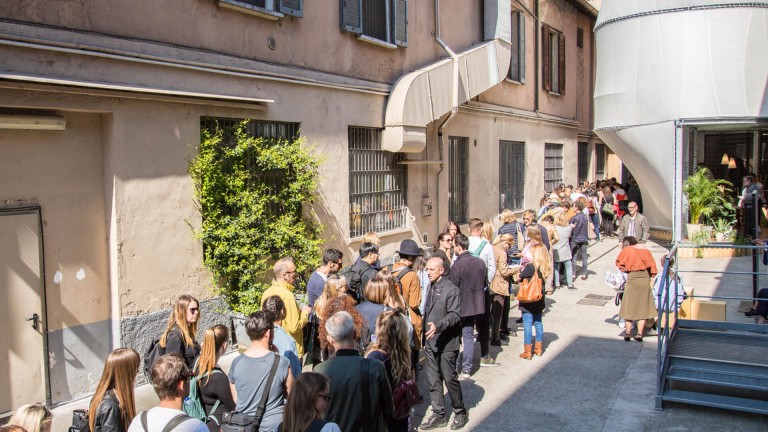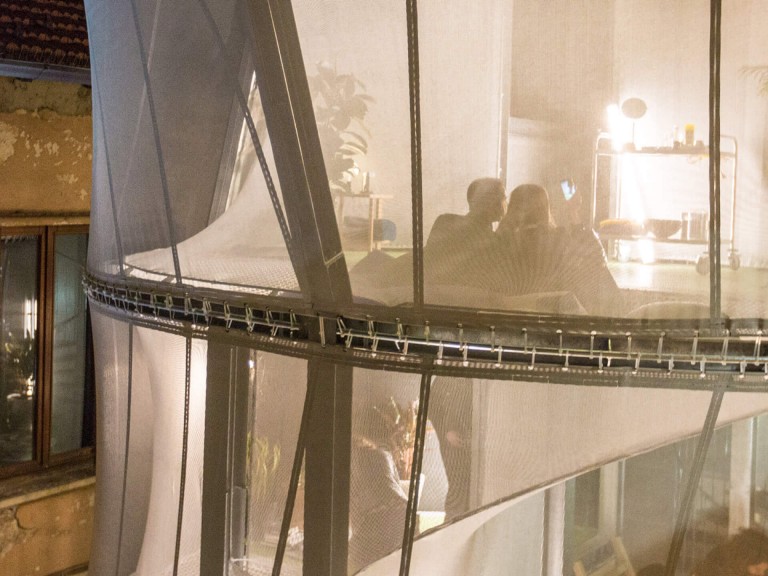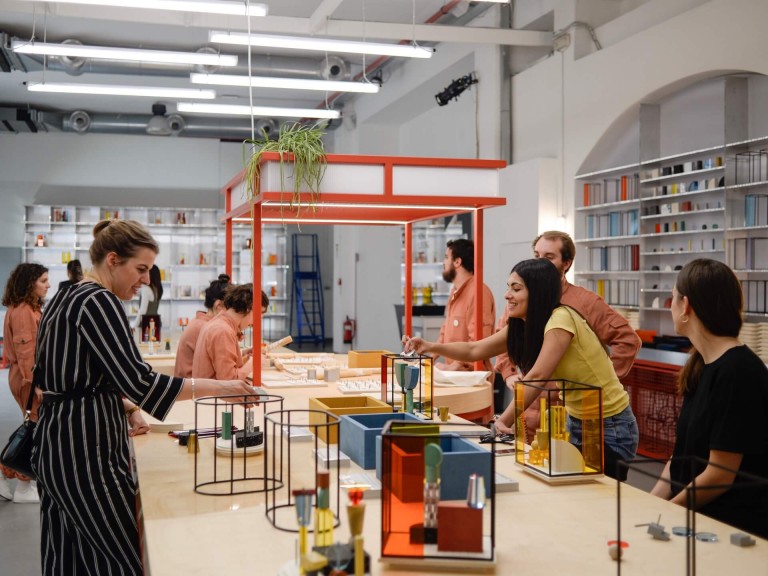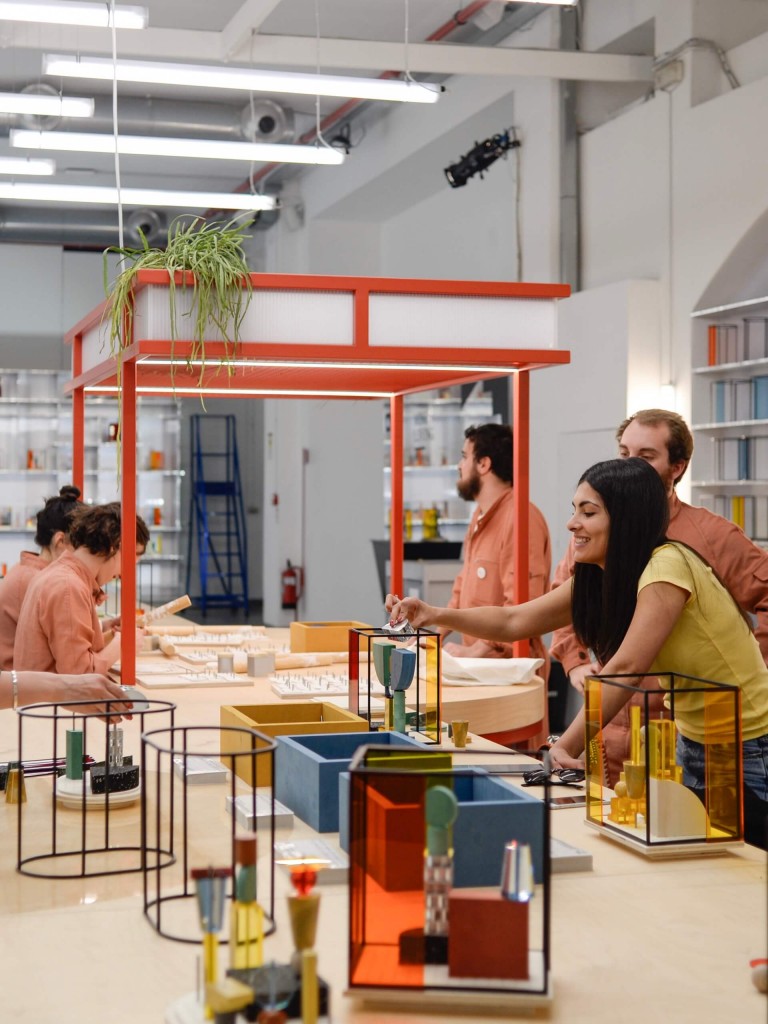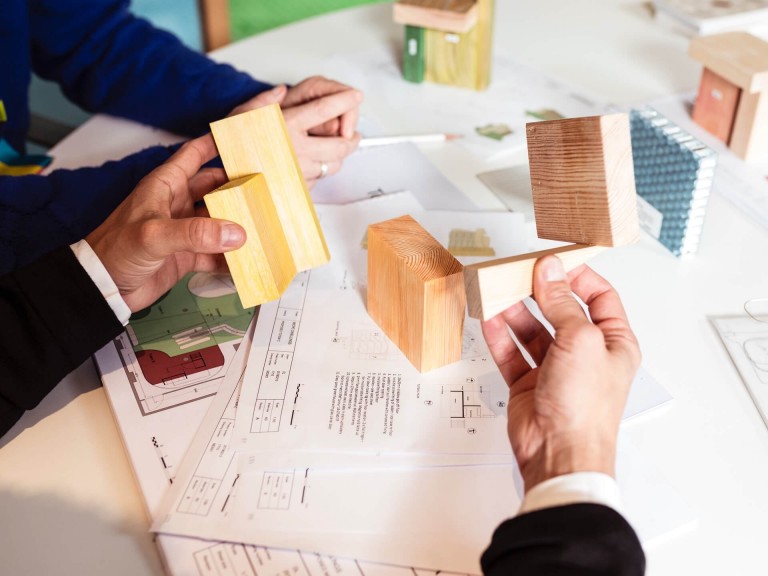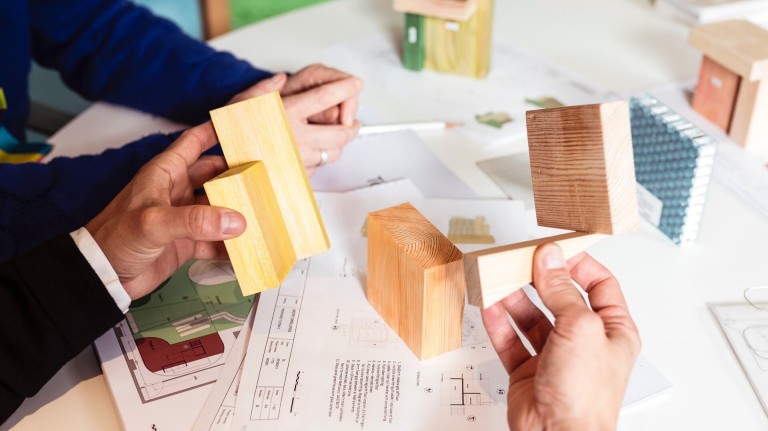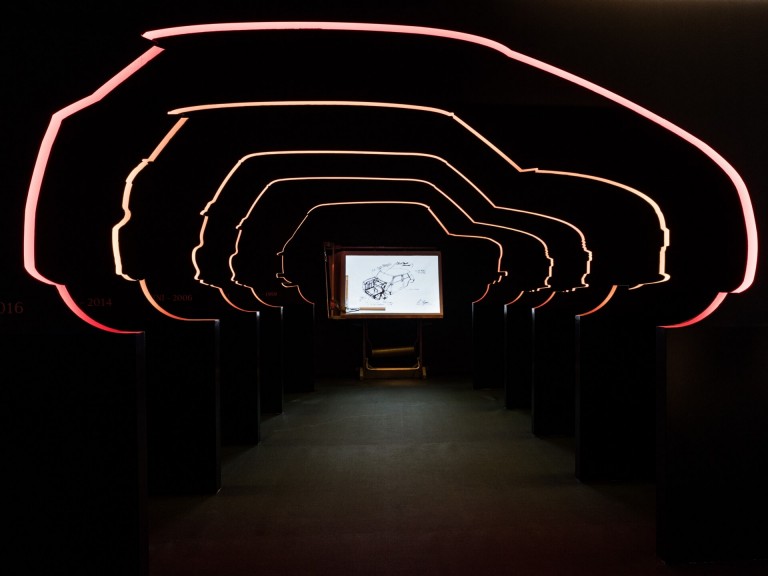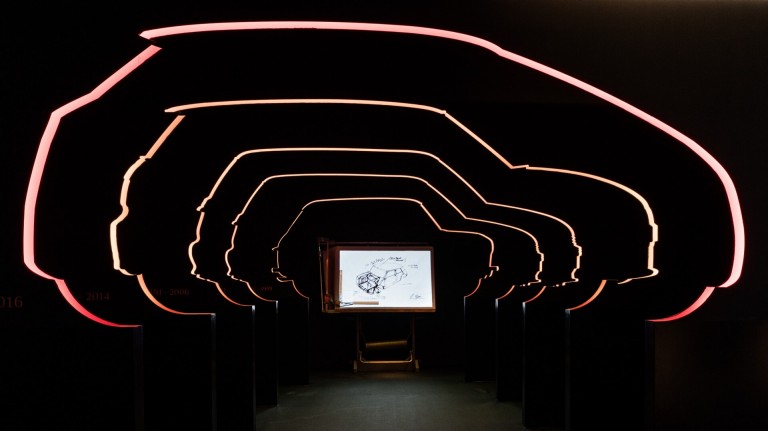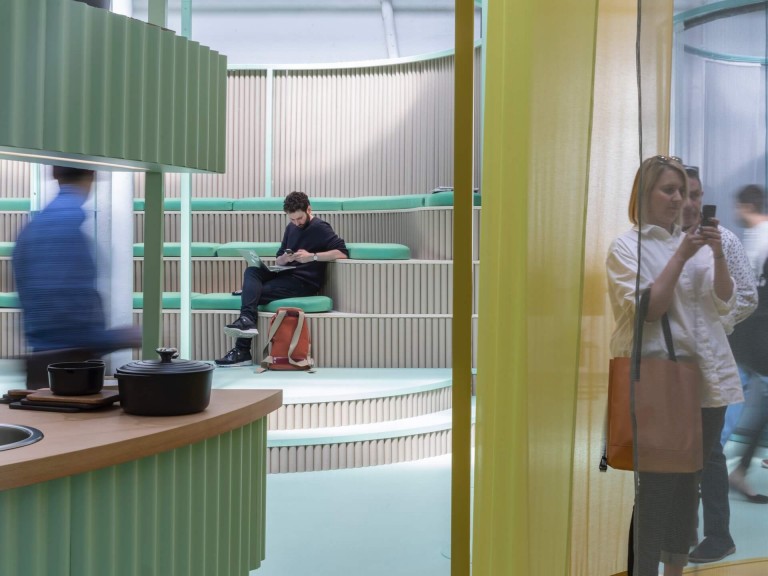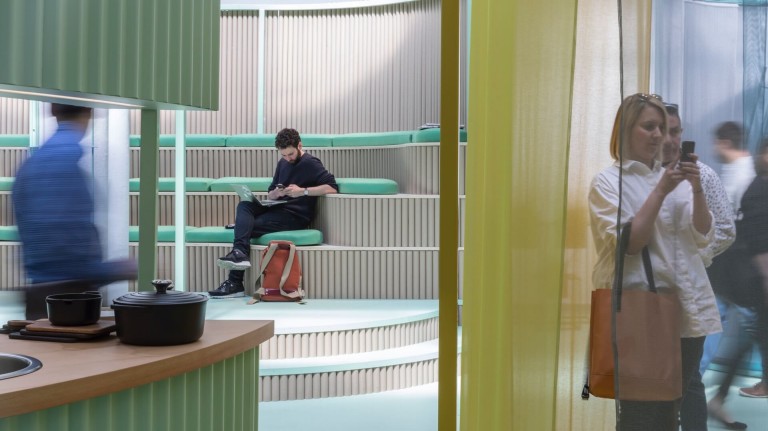Our tool for managing your permission to our use of cookies is temporarily offline. Therefore some functionality is missing.
Salone del Mobile Event 2016

A SURPRISING GATEWAY TO THE NEIGHBOURS.
MINI LIVING – 'Do Disturb' installation at Salone del Mobile 2016.
Japanese studio ON Design collaborates with MINI LIVING on a new vision of urban living to foster community and bring the outside in.
Remember those old movies where the villain had a rotating bookcase in his otherwise normal-looking home? If you pulled the right book out at the right angle, the shelf, the wall it was attached too, and sometimes even the guy holding the book, would rotate a full 180 degrees, usually revealing a secret passageway, a futuristic supercomputer, or a gateway to another dimension.
Well, if you came along to see MINI LIVING at Salone del Mobile in Milan 2016 you might have been reminded of this old trope by the installation 'Do Disturb', a MINI collaboration with Yokohama based architects ON Design and the Berlin division of engineering office Arup. You walk into a stylish, comfortable-looking apartment. In the bedrooms and bathroom, the walls do what walls usually do, keeping the inside in and the outside out. But in the kitchen, living room and workspace, you find that the walls are made of shelves and bookcases that can be swivelled around and opened out at will. What's behind the living room wall, however, is not a secret passageway, but something even more mysterious—neighbours!
A SECRET PASSAGEWAY, OR A FUTURISTIC SUPERCOMPUTER, OR A GATEWAY TO ANOTHER DIMENSION.

For most of us, these are the great enigma of urban life. Our houses and apartments are generally designed to help us forget they exist, so it comes as some surprise to find them right behind the wall. At 'Do Disturb', the walls opened up to invite the neighbours in, so dinner for one could become a communal affair, and a person practising an instrument alone could soon find herself at a spontaneous jam. 'When they open up their walls', ON Design's Osamu Nishida explains, 'they claim a piece of public space for themselves'. Maybe this home is even more like the old rotating bookcase seen in the movies than we thought? What lies behind the wall really is a new dimension. It might not be 'futuristic', but it could well represent the future.
Nishida explains 'Do Disturb' as, 'encouraging creativity through mixture and diversity'. MINI LIVING believes this is what cities at their best provide—the chance to have your mind changed and your ideas enriched by collaboration and exchange. But our houses and apartments generally do a terrible job of facilitating this, since they're stuck in forms invented during the last century. 'Do Disturb' takes a step away from the existing models of apartment and suburban living, each of which, in their own way, evolved from the 19th century ideal of the home as a fortress and sanctuary. MINI's new model acknowledges that people still want and need their privacy, but also hopes to reclaim what's been lost in our hurry to banish the outside world from our homes—community.
DO DISTURB




